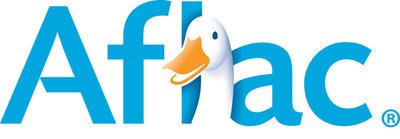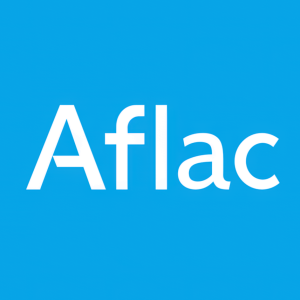American workforce burnout reaches 6-year high
Aflac (NYSE:AFL) released its 15th annual Aflac WorkForces Report on October 9, 2025, finding workplace burnout at a six-year high and rising financial fragility among U.S. employees.
Key findings: 72% of employees report moderate-to-very-high stress; Gen Z 74% burnout rate; 44% couldn’t cover $1,000 OOP medical costs; confidence in coverage fell to 58%. Report highlights gaps in benefits communication and demand for supplemental insurance (90% say need is rising; only 34% of employers offer it).
Aflac (NYSE:AFL) ha pubblicato il suo 15° rapporto annuale Aflac WorkForces il 9 ottobre 2025, rilevando un burnout sul posto di lavoro al livello più alto da sei anni e una crescente fragilità finanziaria tra i dipendenti statunitensi.
Scoperte chiave: 72% dei dipendenti riportano stress da moderato a molto alto; Gen Z 74% tasso di burnout; 44% non riuscivano a sostenere costi medici out-of-pocket di $1,000; la fiducia nella copertura è scesa al 58%. I punti salienti del rapporto evidenziano lacune nella comunicazione dei benefici e una domanda di assicurazione supplementare (il 90% dice che il bisogno è in aumento; solo 34% dei datori di lavoro la offrono).
Aflac (NYSE:AFL) publicó su 15º informe anual Aflac WorkForces el 9 de octubre de 2025, encontrando agotamiento laboral en un máximo de seis años y una creciente fragilidad financiera entre los empleados estadounidenses.
Hallazgos clave: 72% de los empleados reportan estrés de moderado a muy alto; Gen Z 74% tasa de agotamiento; 44% no pudieron cubrir costos médicos fuera de bolsillo de $1,000; la confianza en la cobertura cayó al 58%. El informe destaca brechas en la comunicación de beneficios y la demanda de seguro complementario (el 90% dice que la necesidad está en aumento; solo el 34% de los empleadores lo ofrece).
Aflac (NYSE:AFL)가 15번째 연례 Aflac WorkForces 보고서를 2025년 10월 9일에 발표했고, 직장 내 소진이 6년 만에 최고치에 달했고 미국 직원들 사이에서 재정적 취약성이 증가하고 있습니다.
주요 결과: 72%의 직원이 중간에서 아주 높은 스트레스를 보고했습니다; Gen Z 74%의 번아웃 비율; 44%는 $1,000의 의료비를 털어낼 수 없었습니다; 보장 신뢰도는 58%로 하락했습니다. 보고서는 복리후생 커뮤니케이션의 격차와 보충 보험에 대한 수요 증가를 강조합니다 (90%가 필요성이 증가하고 있다고 말하며; 고용주 중 34%만이 이를 제공합니다).
Aflac (NYSE:AFL) a publié son 15e rapport annuel Aflac WorkForces le 9 octobre 2025, révélant un épuisement professionnel au plus haut depuis six ans et une fragilité financière croissante chez les employés américains.
Principales conclusions : 72% des employés signalent un stress de modéré à très élevé ; Gen Z 74% taux d’épuisement ; 44% ne pouvaient pas couvrir des coûts médicaux hors poche de $1 000 ; la confiance dans la couverture est tombée à 58%. Les points forts du rapport soulignent des lacunes dans la communication des prestations et une demande d’assurance complémentaire ( 90% disent que le besoin augmente ; seulement 34% des employeurs l’offrent).
Aflac (NYSE:AFL) veröffentlichten ihren 15. jährlichen Aflac WorkForces Report am 9. Oktober 2025 und fanden Burnout am Arbeitsplatz auf dem höchsten Stand seit sechs Jahren und eine wachsende finanzielle Fragilität unter US-Beschäftigten.
Zentrale Ergebnisse: 72% der Mitarbeitenden berichten moderaten bis sehr hohen Stress; Gen Z 74% Burnout-Rate; 44% konnten $1,000 OOP-Kosten nicht decken; Vertrauen in den Versicherungsschutz fiel auf 58%. Highlights des Berichts heben Lücken in der Benefits-Kommunikation hervor und die Nachfrage nach Zusatzversicherung (90% sagen, der Bedarf steigt; nur 34% der Arbeitgeber bieten sie an).
Aflac (NYSE:AFL) أصدرت تقرير Aflac WorkForces السنوي الخامس عشر في 9 أكتوبر 2025، حيث وجد الإرهاق في مكان العمل عند أعلى مستوياته خلال ست سنوات وارتفاع هشاشة المالية بين موظفي الولايات المتحدة.
النتائج الرئيسية: 72% من الموظفين يبلغون عن ضغط من معتدل إلى عالي جداً؛ Gen Z 74% معدل الإرهاق؛ 44% لم يستطيعوا تغطية تكاليف طبية خارجية قدرها $1,000؛ ثقة في التغطية انخفضت إلى 58%. يبرز أبرز نقاط التقرير فجوات في تواصل المزايا وطلب للحصول على تأمين تكميلي (يقول 90% إن الاحتياج في تزايد؛ فقط 34% من أصحاب العمل يوفرونه).
Aflac (NYSE:AFL) 于 2025年10月9日发布第15份年度 Aflac WorkForces 报告,发现工作场所倦怠达到六年来的高点,且美国员工的财政脆弱性在上升。
关键发现:72% 的员工报告中到高程度的压力;Gen Z 74% 的倦怠率;44% 无法承担 $1,000 的自付医疗费用;对覆盖范围的信心降至 58%。报告强调福利沟通存在差距,并对补充保险的需求上升(90% 表示需求在增加;只有 34% 的雇主提供)。
- None.
- None.
15th annual Aflac WorkForces Report uncovers highest prevalence of stress among African Americans and younger generations
Toll of stress and burnout
Nearly 3 in 4 (
"New Aflac WorkForces Report data around the prevalence of stress and burnout should raise a red flag and is certainly a matter that requires attention," said Aflac Chief Strategy Officer Matthew Owenby. "Breaking the cycle of stress and burnout may begin with employers carefully analyzing employees' responsibilities both on and off the clock and threading the needle between productivity and home life balance. Developing a broader understanding of what is driving stress can support the creation of programs that alleviate burnout which, in turn, can deliver a higher level of productivity."
Looming undercurrent of financial fragility
American workers continue to feel financially fragile. More than 2 in 5 (
According to the report, American employees' confidence in their health care coverage if faced with a major health event has declined over the past year (
Employers understanding of employee benefits needs shows decline
Nearly three-quarters (
Supplemental benefits stand out as an important part of a comprehensive benefits package and a viable step toward financial stability and peace of mind. They can help fill the financial void left by high deductibles, co-pays or other unexpected medical expenses. The study shows
"Supplemental insurance — something that
Added benefits of belonging in the workplace
Fostering a sense of belonging is vital to a healthier, more productive workplace. The report underscores that when employees feel they belong and have purpose, satisfaction rises, stress eases, burnout drops and engagement deepens. Employees who feel they belong experience far less workplace stress (
"Employees' sense of belonging influences how they feel about their roles, colleagues and organization as a whole," said Owenby. "We should all take note and explore ways to build cultures that genuinely support opportunities for a more engaged workforce — one that is grounded in purpose and value. Belonging is a powerful driver of employee well-being."
The 2025-2026 Aflac WorkForces Report highlights the vital role of comprehensive benefits in employees' well-being, satisfaction, resilience and retention. Additional survey findings trends and more can be found at Aflac.com/AWR.
ABOUT THE 2025-2026 AFLAC WORKFORCES REPORT
The 2025-2026 Aflac WorkForces Report is the 15th annual employee study examining benefits trends and attitudes. Conducted by Kantar on behalf of Aflac, the employer survey took place online between April 2 and April 29, 2025, and the employee survey took place online between April 2 and May 6, 2025. Throughout this report, some percentages may not add up to
ABOUT AFLAC INCORPORATED
Aflac Incorporated (NYSE: AFL), a Fortune 500 company, has helped provide financial protection and peace of mind for nearly seven decades to millions of policyholders and customers through its subsidiaries in the
Media contact: Jon Sullivan, 706.573.7610 or jsullivan@aflac.com
Analyst and investor contact: David A. Young, 706.596.3264 or dyoung@aflac.com
1 Aflac.com/AWR
2 LIMRA 2023 US Supplemental Health Insurance Total Market Report
3 JAMA Network: Estimated Out-of-Pocket Costs for Patients With Common Cancers and Private Insurance
Aflac's family of insurers include American Family Life Assurance Company of
Aflac | WWHQ | 1932 Wynnton Road |
![]() View original content to download multimedia:https://www.prnewswire.com/news-releases/american-workforce-burnout-reaches-6-year-high-302579041.html
View original content to download multimedia:https://www.prnewswire.com/news-releases/american-workforce-burnout-reaches-6-year-high-302579041.html
SOURCE Aflac










